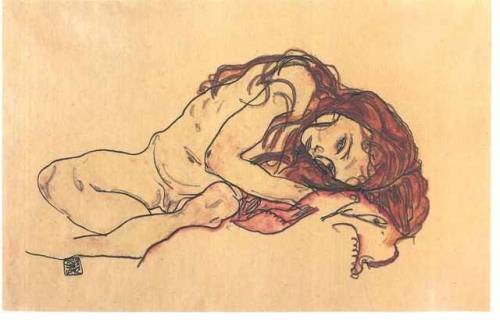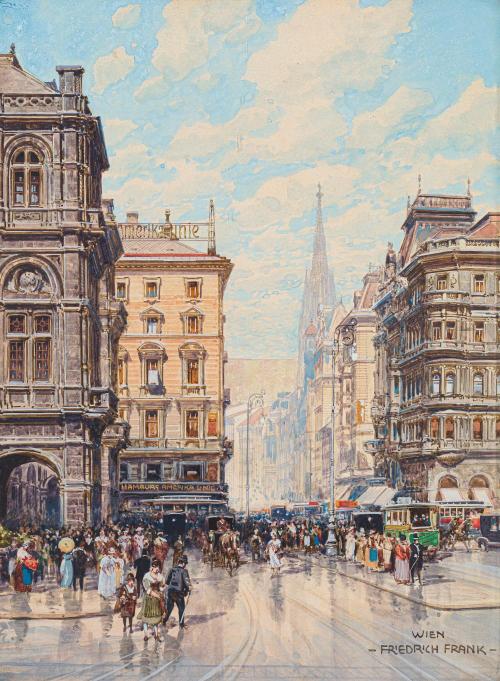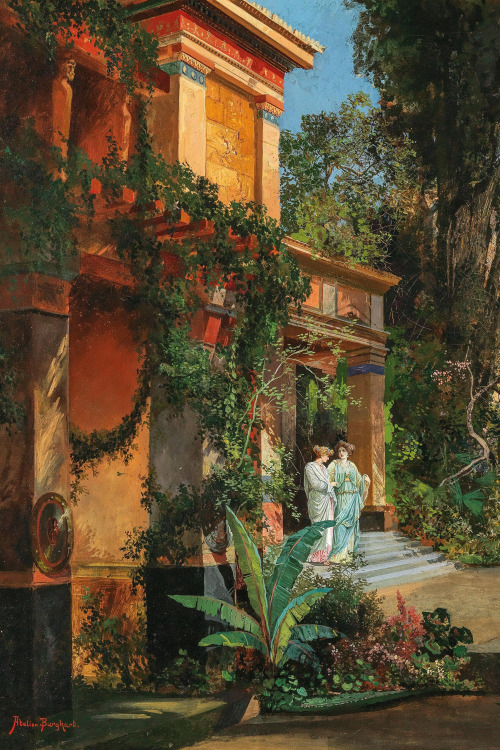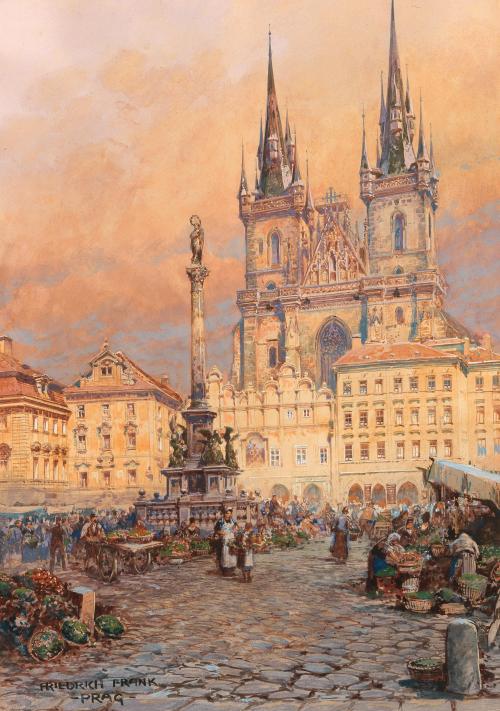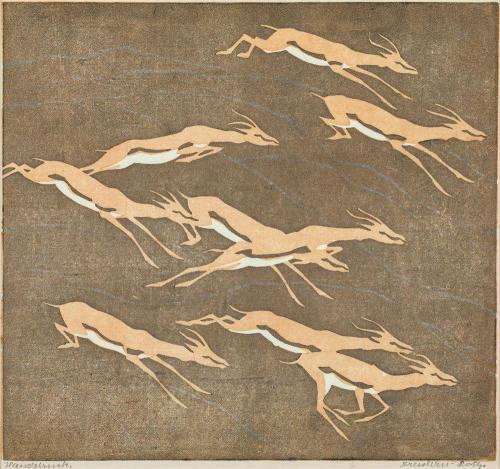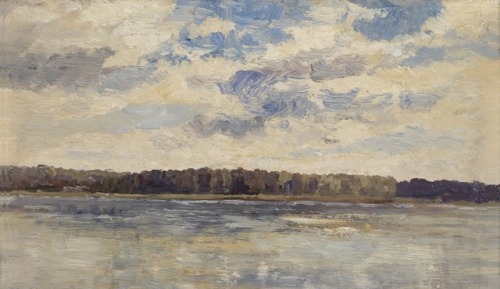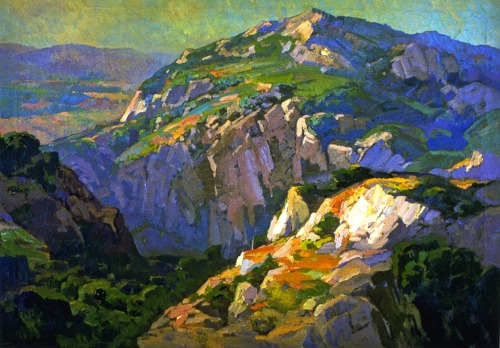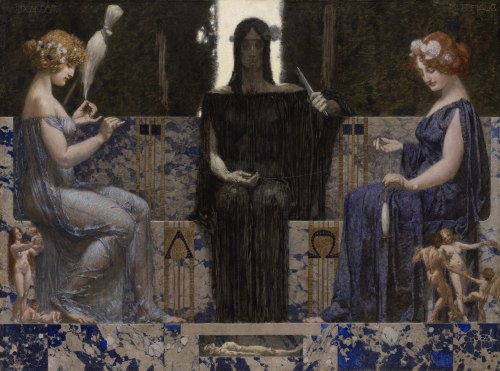#austrian artist
(tw: allegations of incest and sexual abuse)
Crouching female nude with bended head by Egon Schiele, 1918.
On June 18th, 1915, three days after his wedding, Schiele was conscripted into the Austrian army. Due to his excellence in handwriting, he spent most of the war working as a clerk in a POW camp. He continued to draw, encouraged by his commanding officer.
Despite avoiding action on the front lines, Schiele did not survive to see the Armistice. His wife, six months pregnant, fell victim to the Spanish Influenza pandemic on Oct. 28th, 1918. Schiele, who had also contracted the disease, capitulated three days later. He was 28.
One hundred years after his death, Schiele is categorized with a group of erotic artists that includes one of his mentors, Gustav Klimt. I’m not sure that’s the right place for Schiele, as although his major works have sexual themes, they are often grotesque.
In 1912, Schiele was arrested for seducing a girl under the age of consent. He was ultimately convicted on a lesser charge of showing pornography to a child. He may also have initiated an incestuous relationship with his sister, Gerti, when she was 12. On at least one occasion, he was forced to move out of town due to suspicions he had molested teenage girls posing for him.
Whereas Klimt unabashedly celebrated eroticism, I think Schiele had a much darker perspective on sexuality. Although there can be beauty in brutality, Schiele’s work is tinged by a sense of repulsion, perhaps self-directed.
The gap of time does not allow for confirmation or rejection of the rumours surrounding Schiele, The art he left behind, however, has a distorted and delinquent quality (for example, the portrayal of the genitals of the redheaded model, above) which–and mine is a minority opinion–isn’t so sexy.
Post link

Maximilian Lenz “La Primavera" The Spring 1904 oil on canvas. Private collection
AnightatAltstädterRinginPrague,theTynchurchinthebackground.(detail),
FriedrichFrank(Austrian,1871-1945)
Post link
Vienna,ViewacrosstheKärntnerstraßetoSt.Stephen’sCathedral,
FriedrichFrank(Austrian,1871–1945)
Post link
AnightatAltstädterRinginPrague,theTynchurchinthebackground.
FriedrichFrank(Austrian,1871-1945)
Post link
EscapebyNorbertine von Bresslern-Roth (Austrian, 1891-1978), 1923, colour linocut print, 20.8 x 22.8 cm, signed: Bresslern-Roth, private collection
Post link
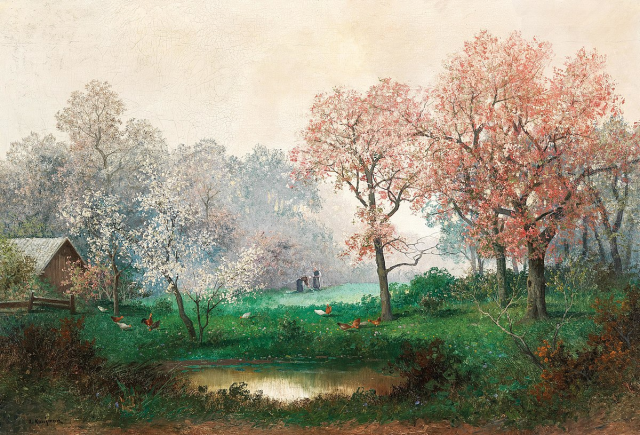
Adolf Kaufmann (1848-1916)
“Under Flowering Trees”
Oil on canvas

The Frog King
Artist : Alexander Rothaug (1870-1946)










A Stroll Through Time
Carl Moll (1861-1945), Austrian painter and gallery director.
He is the founder of the Austrian Art Nouveau movement, the Sezession, with Gustav Klimt (1862-1918). He was a Nazi sympathizer, and committed suicide when the Red Army arrived in April 1945.
His heterogeneous style followed the artistic evolutions of his time, at the crossroads of the 19th and 20th centuries.
(The pictures shows, in order, the evolution of Carl Moll’s style: Watermill in Goisern - after Emil Jakob Schindler, Wassermühle in Goisern - nach Emil Jakob Schindler, 1884 ; A street in Ragusa, 1887 ; The Roman ruin in Schönbrunn, Die Römische Ruine in Schönbrunn, 1891 ; The Naschmarkt in Vienna, Der Naschmarkt in Wien, 1894 ; View from the Hohe Warte towards Heiligenstadt, Blick von der Hohen Warte auf Heiligenstadt, circa 1900 ; Stroll in the gardens of the Votivkirche, between 1902 and 1903 ; Girl in the flower meadow, Mädchen in der Blumenwiese, 1909 ; Döbling Wien, 1916 ; Santa Maria della Salute, Venice, 1923 ; and finally, Waidhofen an der Ybbs, circa 1938)

